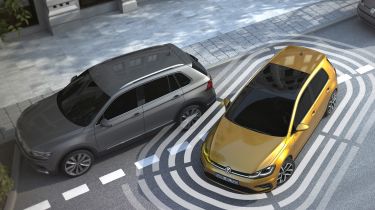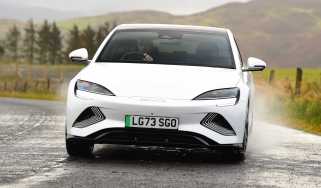How to parallel park – the ultimate guide for learner drivers
Parallel parking is a feared manoeuvre for many drivers, but with these techniques and a bit of practice, anyone can get to grips with the parallel park
Parallel parking next to the kerb is one of the most useful skills a driver can have, but is often perceived as a daunting procedure on a driving test or in general motoring life. Thankfully, the following guide, along with some practice, should make parallel parking a little easier, allowing you to park at the roadside in any town or city street first time, without worrying about kerbed wheels or damage to your vehicle.
Even before sitting behind the wheel for the first time, learner drivers may dread learning how to parallel park. It’s for this reason that your driving instructor will insist on spending time honing your parking skills, and that you may very well be asked to demonstrate a parallel park during your driving test. Once you’ve learnt the techniques and can execute a parallel park confidently, you’ll be able to park anywhere.
As with all driving techniques – practice makes perfect, so even if you’ve passed your test but are a little rusty behind the wheel or aren’t feeling too confident when it comes to parallel parking, just go out and find a quiet residential street where you can reverse into and drive out of a suitable space repeatedly without worrying too much about holding up the traffic. So read on to learn how to parallel park properly.
What is parallel parking?
Parallel parking is when you park the car parallel or next to the roadside, but for the purposes of the driving test it refers specifically to the technique of reversing into a relatively small space between two other ‘parallel parked’ cars. Parallel parking is one of the most common manoeuvres you’ll need to employ if you’re looking to park in many towns or cities where parking is permitted.
How do I parallel park? The perfect parallel parking technique
This guide is written assuming you’re parking on the left hand side of the road, following the flow of traffic. You may have been taught a slightly different method, but the principals will remain the same.
1. Size up the space and indicate
Indicate as you approach your allotted space slowly and with caution, making sure you are aware of traffic and hazards all around as you slow to a halt alongside the space.
Size up the space to make sure you’ll fit – if it’s one-and-a-half times the length of your car that’s ideal, but you’ll want at least 2ft of clearance at either end of your car to make room for manoeuvring.
2. Position the car correctly
Paying close attention to surrounding traffic and/or pedestrians. While indicating, move slowly forward until your car is level with the car parked in front of your space. You should leave a gap of approximately one metre between your two vehicles.
3. Stop and check your mirrors
Stop, and take the opportunity to check your mirrors and blind-spots, and make this critical safety check obvious to the examiner by being sure to turn your head.
4. When safe, begin to reverse
Engage reverse gear, look over your left shoulder to see out through the rear windscreen, and as long as it’s safe to proceed you can begin reversing.
5. Line up your back tyres, check your mirrors
When your back tyres are in line with the rear bumper of the car you’re planning to park behind, prepare for turning the wheel by pausing the reverse and checking your mirrors and blind spot again for hazards. Some people advise applying the handbrake for this safety check, but either way it’s critical to make sure the examiner is confident you are in control of the car and have good all-round awareness.
6. Begin to turn into the space
Rotate the steering wheel one full turn to the left and, if it’s safe, begin to reverse into the space while again looking over your shoulder through the rear window. You should now be entering the space at an angle of roughly 45 degrees, and the front of your car will have swung out wider into the road. During this manoeuvre take the opportunity again to check all mirrors and blind spots around the car to maintain hazard awareness, and keep checking the nearside mirror.
7. Stop when you can see the kerb
When the kerb is visible in the mirror, check your car is clear of the vehicle parked in front, and begin to straighten up in the space by applying full right hand steering lock as you continue to reverse slowly. This will swing the front of your car close to the kerb.
8. Time to make fine adjustments
Straighten up while reversing by moving the wheel left or right as appropriate, and using the nearside mirror to help align your car neatly with the kerb.
9. When finished, apply the handbrake
Once you are in the space and have completed your parallel park, apply the handbrake. You should have about one foot/ 30cm of space between the kerb and your car and be reasonably straight.
Do I have to parallel park during my driving test?
On your practical driving test parallel parking is one of three parking-related tasks you may be asked to perform, so there is a fairly high chance you will be asked to park in this way. The other two tasks are reversing in or out of a parking bay, or reversing alongside the kerb for two car lengths on the right hand side of the road – the examiner can pick whichever one he or she fancies on the day.
If required to demonstrate your parallel parking skills, you’ll be asked to park in a space on the left hand side of the road that’s no longer than two car lengths. It’s admittedly one of the more complicated tasks in the driving test, but really shouldn’t cause you problems if you’ve practised with your instructor.
Can you fail the driving test on parallel parking?
Don’t panic if your parallel parking manoeuvres don’t go perfectly to plan during your test. As long as the examiner is confident that you are on top of hazard awareness at all times and that you can stop reasonably close to the kerb, you are unlikely to be failed with a serious fault. Make a serious hash of the manoeuvre though, mount the kerb or show a major lack of control, and you could fail on this part of the test.
You can also pick up standard faults, also known as minors, if you demonstrate a lack of accuracy – for instance by scuffing the kerb or having to reposition the car mid-manoeuvre. Tot up enough minors (15 to be exact) and you won’t pass your test.
Now read about our other Practical driving test tips...
Find a car with the experts






